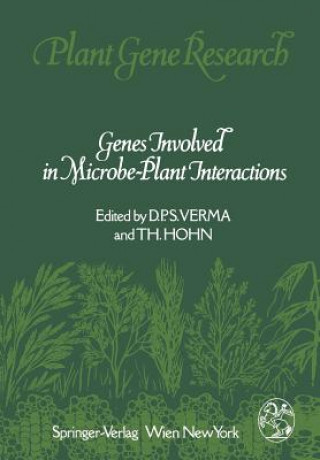
Doručení
Nákupní rádce





Nehodí se? Vůbec nevadí! U nás můžete do 30 dní vrátit
 Dárkový poukaz
V libovolné hodnotě
Dárkový poukaz
V libovolné hodnotě
S dárkovým poukazem nešlápnete vedle. Obdarovaný si za dárkový poukaz může vybrat cokoliv z naší nabídky.
Genes Involved in Microbe-Plant Interactions
 Angličtina
Angličtina
 154 b
154 b
30 dní na vrácení zboží
Mohlo by vás také zajímat


Interdependence between species is a law of nature. The degree of this interdependence is vividly evident in the plant-microbial world. Indeed, there is no axenic plant in nature and one finds various forms of interac tions between these two kingdoms ranging from completely innocuous to obligate parasitic. Most of these interactions are poorly understood at the molecular and physiological levels. Only those few cases for which a molecular picture is emerging are discussed in this volume. With the advent of recombinant DNA technology and the realization that some of these interactions are very beneficial to the host plant, a spate of activity to understand and manipulate these processes is occurring. Microbes interact with plants for nutrition. In spite of the large number of plant-microbe interactions, those microbes that cause harm to the plants (i. e. , cause disease) are very few. It is thus obvious that plants have evolved various defense mechanisms to deal with the microbial world. The mecha nisms for protection are highly diverse and poorly understood. Some pathogens have developed very sophisticated mechanisms to parasitize plants, an excellent example for this being crown gall caused by a soil bac terium, Agrobacterium tumefaciens. A remarkable ingenuity is exhibited by this bacterium to manipulate its host to provide nitrogenous compounds which only this bacterium can catabolize. This is carried out by a direct gene transfer mechanism from bacteria to plants.
Informace o knize
 Angličtina
Angličtina
Kategorie




 Jak nakupovat
Jak nakupovat




























